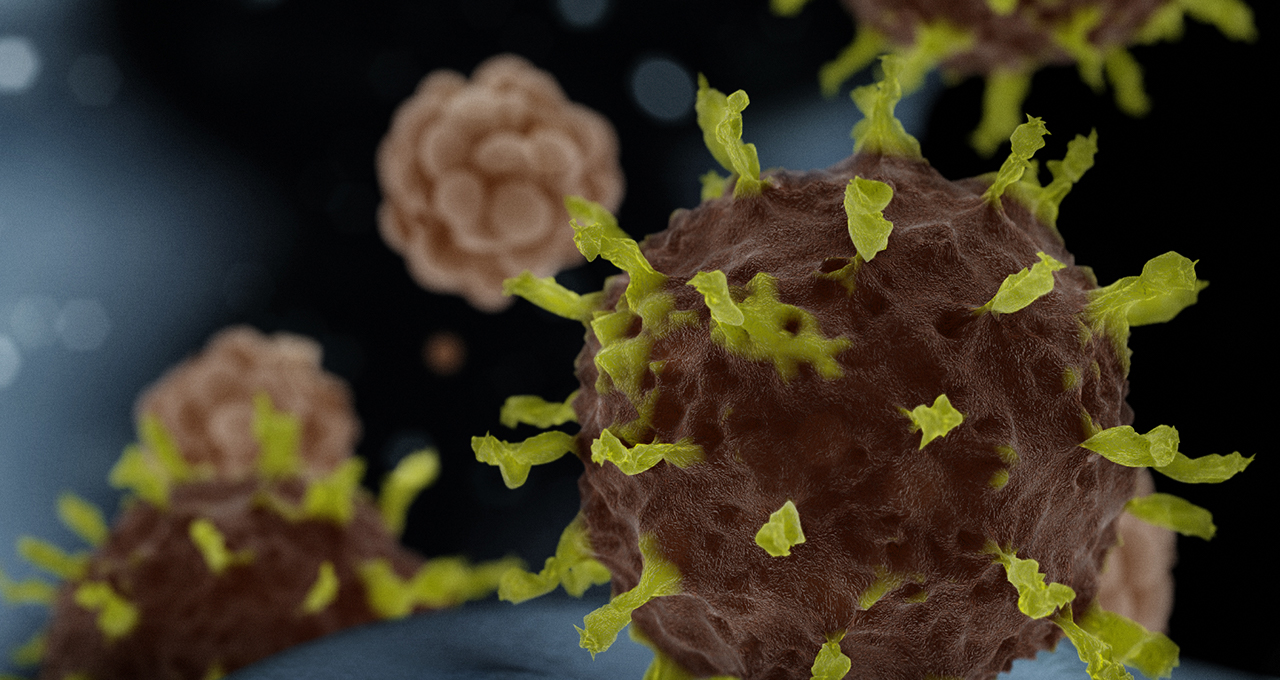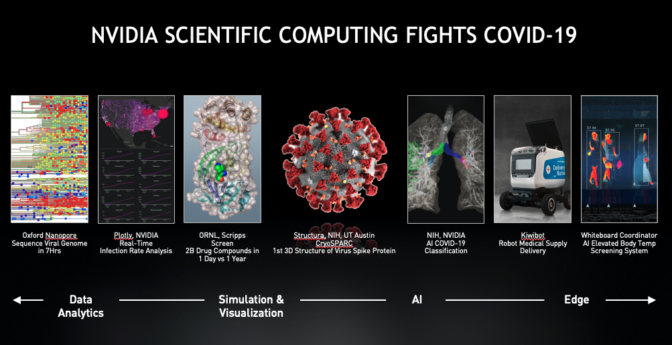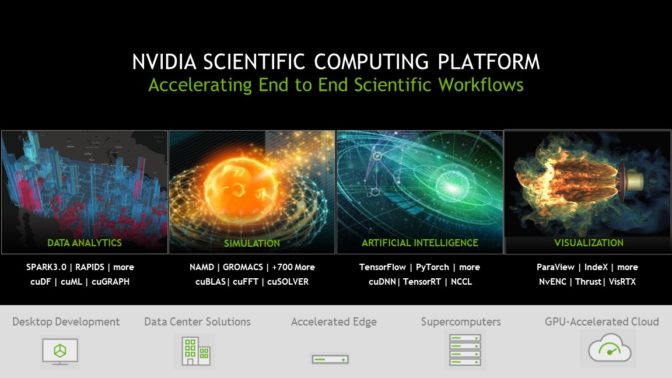Scientists and researchers around the world are racing to find a cure for COVID-19.
That’s made the work of all those digitally gathered for this week’s high performance computing conference, ISC 2020 Digital, more vital than ever.
And the work of these researchers is broadening to encompass a wider range of approaches than ever.
The NVIDIA scientific computing platform plays a vital role, accelerating progress across this entire spectrum of approaches — from data analytics to simulation and visualization to AI to edge processing.
Some highlights:
- In genomics, Oxford Nanopore Technologies was able to sequence the virus genome in just 7 hours using our GPUs.
- In infection analysis and prediction, the NVIDIA RAPIDS team has GPU-accelerated Plotly’s Dash, a data visualization tool, enabling clearer insights into real-time infection rate analysis.
- In structural biology, the U.S. National Institutes of Health and the University of Texas, Austin, are using GPU-accelerated software CryoSPARC to reconstruct the first 3D structure of the virus protein using cryogenic electron microscopy.
- In treatment, NVIDIA worked with the National Institutes of Health and built an AI to accurately classify COVID-19 infection based on lung scans so efficient treatment plans can be devised.
- In drug discovery, Oak Ridge National Laboratory ran the Scripps Research Institute’s AutoDock on the GPU accelerated Summit Supercomputer to screen a billion potential drug combinations in just 12 hours.
- In robotics, startup Kiwi is building robots to deliver medical supplies autonomously.
- And in edge detection, Whiteboard Coordinator Inc. built an AI system to automatically measure and screen elevated body temperatures, screening well over 2,000 healthcare workers per hour.
It’s truly inspirational to wake up every day and see the amazing effort going on around the world and the role NVIDIA’s scientific computing platform plays in helping understand the virus and discovering testing and treatment options to fight the COVID-19 pandemic.
The reason we’re able to play a role in so many efforts, across so many areas, is because of our strong focus on providing end-to-end workflows for the scientific computing community.
We’re able to provide these workflows because of our approach to full-stack innovation to accelerate all key application areas.
For data analytics, we accelerate the key frameworks like Spark3.0, RAPIDS and Dask. This acceleration is built using our domain-specific CUDA-X libraries for data analytics such as cuDF, cuML and cuGRAPH, along with I/O acceleration technologies from Magnum IO.
These libraries contain millions of lines of code and provide seamless acceleration to developers and users, whether they’re creating applications on the desktops accelerated with our GPUs or running them in data centers, in edge computers, in supercomputers, or in the cloud.
Similarly, we accelerate over 700 HPC applications, including all the most widely used scientific applications.
NVIDIA accelerates all frameworks for AI, which has become crucial for tasks where the information is incomplete — where there are no first principles to work with or the first principle-based approaches are too slow.
And, thanks to our roots in visual computing, NVIDIA provides accelerated visualization solutions, so terabytes of data can be visualized.
NASA, for instance, used our acceleration stack to visualize the landing of the first manned mission to Mars, in what is the world’s largest real-time, interactive volumetric visualization (150TB).
Our deep domain libraries also provide a seamless performance boost to scientific computing users on their applications across the different generations of our architecture. Going from Volta to Ampere, for instance.
NVIDIA’s also making all our new and improved GPU-optimized scientific computing applications available through NGC for researchers to accelerate their time to insight
Together, all of these pillars of scientific computing — simulation, AI and data analytics , edge streaming and visualization workflows — are key to tackling the challenges of today, and tomorrow.
Stay up to date with the latest healthcare news from NVIDIA.


